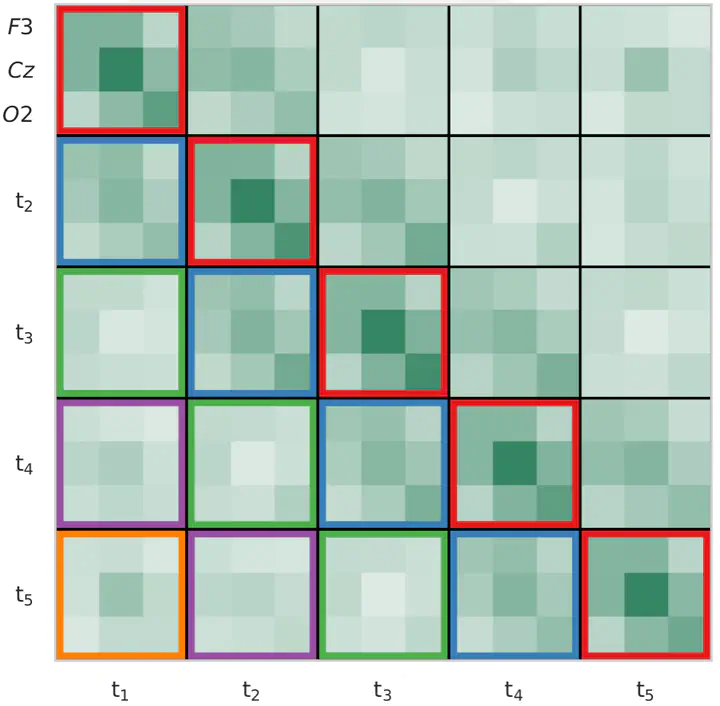Influence of Artifacts upon Block-Toeplitz Regularized Covariance Matrices

For many machine learning methods in BCI, covariance matrices (more precisely: sample covariance matrix, SCM) are used to describe, how background brain signals auto-covary over time within a single measured EEG channel, and also how the signals of multiple channels cross-covary that are distributed over the scalp. A SCM typically needs to be estimated from training data, and if not a large number of training data points are available (unfortuntely this is a common problem in BCI), its entries are estimated poorly. Poorly estimated SCMs lead to a decreased performance, e.g., of classification models like linear discriminant analysis (LDA) which rely on both, accurate class mean estimates and SCMs. To improve the quality of an empirically estimated covariance matrix, different regularization methods have been proposed. A very recent one, block-Toeplitz regularization [1], makes rather strong domain-specific assumptions about the measured EEG signal, as it expects stationary signals (at least within short time windows, so-called epochs) and assumes, that covariance wears off with longer time distances between samples. In an ideal EEG recording, these assumptions seem reasonable, but artifacts in the measured EEG signal, can undermine the stationarity assumption. So far, block-Toeplitz regularization for an LDA classifier has been evaluated without a preceding cleaning of artifacts [1], but it may be possible to improve the already impressive performances of a “block-Toeplitz LDA” if artifact cleaning is used for the classification problems of BCIs that use event-related potential (ERP) protocols.
Task
This thesis shall investigate, how different types of common EEG artifacts caused by eye blinks, eye movements, head movements etc. challenge the stationarity assumption. In a second step, the impact of artifacts on the decoding performance of a block-Toeplitz LDA shall be evaluated, both, with and without artifact cleaning procedures.
[1] Sosulski, J., & Tangermann, M. (2022). Introducing block-Toeplitz covariance matrices to remaster linear discriminant analysis for event-related potential brain–computer interfaces. Journal of Neural Engineering, 19(6), 066001. https://doi.org/10.1088/1741-2552/ac9c98
Skills required
- BCI background by accomplished course SOW-BKI 323 or SOW-MKI 74
- Strong mathematical background and intuition
- Machine learning
- Good programming skills in Python (familiarity with numpy, sklearn, MNE)
- Experience in ERP data analysis